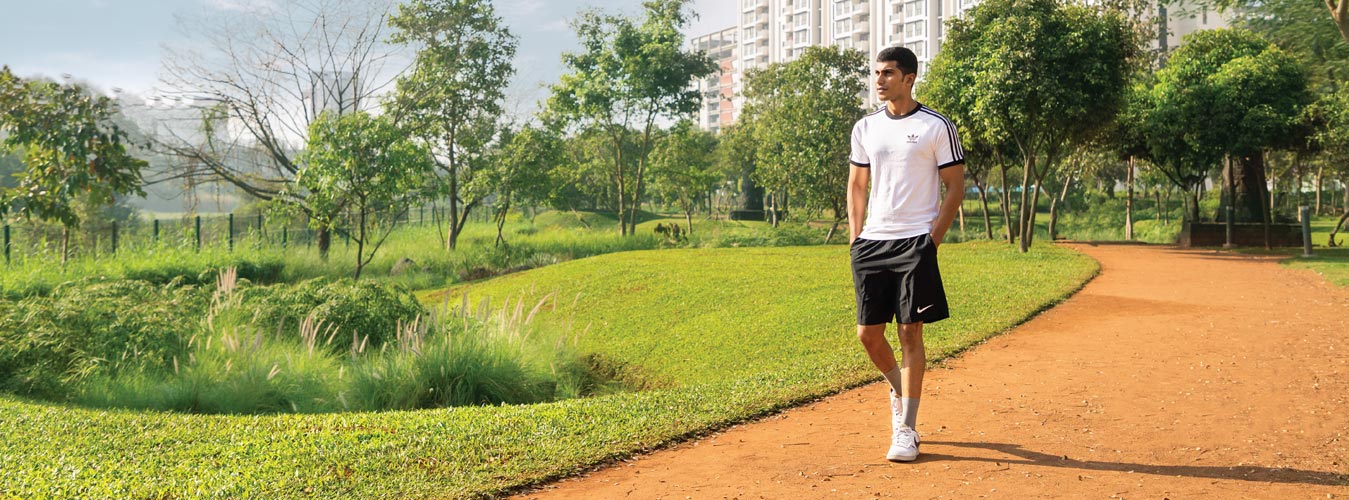As urban areas around the world continue to grow, urban planners and developers face the challenge of making them more livable and building sustainable development projects in the face of rising heat waves. One of the most significant issues we see in cities today is the Urban Heat Island (UHI) effect, where urban areas are noticeably hotter than their rural surroundings due to materials like concrete and asphalt trapping heat. This extra heat increases energy consumption, strains resources, and worsens air quality, creating challenges for public health and the environment.
To address these issues, there is a growing focus on integrating passive design and nature-based solutions (NbS) into urban planning. These strategies not only help reduce the UHI effect but also enhance the overall livability of cities by creating more comfortable, energy-efficient, and resilient environments.
Understanding the effect of Urban Heat Island in India
The Urban Heat Island effect occurs when cities replace natural landscapes with heat-absorbing materials, such as asphalt, concrete, and steel. This leads to cities being significantly warmer than rural areas, particularly at night when heat gets trapped in built environments. This temperature increase drives up the demand for air conditioning, contributes to heat-related health problems, and amplifies the effects of climate change.
To combat UHI, cities are turning to passive design and nature-based solutions, which work by utilising natural processes and systems to cool down urban areas. These methods have been studied and implemented in cities worldwide and offer a promising path forward.
Passive Design: Cooling Cities Through Smart Architecture
One of the most effective strategies for cooling cities is passive design, which uses natural elements such as sunlight, wind, and airflow to regulate temperatures without heavy reliance on energy-intensive systems like air conditioning. Passive design principles can be applied to both buildings and city planning to create cooler and more comfortable spaces. These techniques not only reduce the need for mechanical cooling but also make public spaces more pleasant during hot weather.
Some examples of passive design include:
- High Solar Reflectance Index (SRI) materials for pavements and walls, which help to reduce the amount of heat absorbed by urban infrastructure.
- Cool roofs that reflect sunlight and reduce heat absorption.
- Strategically oriented building blocks and internal roads that maximize natural ventilation
- Mutual Shading of buildings and shaded internal roads and pathways that block direct sunlight from heating surfaces.
Nature-based Solutions: Harnessing Nature for Cooler Cities
In addition to passive design, cities are increasingly turning to nature-based solutions (NbS) to help mitigate the UHI effect. NbS involves using natural processes, ecosystems, and biodiversity to provide essential services like cooling, air purification, and water management. These solutions offer multiple benefits beyond temperature reduction, such as improving air quality, enhancing biodiversity, and promoting public health.
Some key examples of NbS in urban areas include:
- Green spaces and parks that provide shade and cool the air through evapotranspiration.
- Tree-lined streets that create natural shade and help lower temperatures in public areas.
- Water features like ponds, fountains, and wetlands that promote evaporative cooling and help regulate urban temperatures.
Combining passive design with nature-based solutions (NbS) enhances urban cooling and energy efficiency. Cool roofs, reflective pavements, green spaces, tree canopies, and water features together reduce temperatures, lower energy use, and curb emissions. Integrating these elements into urban planning creates healthier, more sustainable environments for residents.
Real-World Impact: Palava City
Palava City is a perfect example of how we’ve designed an entire urban ecosystem to tackle the UHI effect given the focus on sustainability at Lodha. As one of the largest privately-planned cities in the world, Palava was built with sustainability in mind from the start. It also acts as a living lab for Lodha Net Zero Urban Accelerator to build integrative sustainable solutions at the city scale. By integrating green spaces, using cool roofing and other high reflective materials for external finishes, and strategically enhancing natural ventilation at masterplan level, Palava has achieved notable results in reducing urban heat.
This approach doesn’t just lower the temperature in Palava,—it also helps reduce the city’s environmental footprint and improves the quality of life for residents. Palava shows how a well-planned city can thrive while keeping its environmental impact low.
Studies show that Palava’s maximum land surface temperature is 3°C cooler than neighbouring Kalyan-Dombivli and 2°C cooler than Mumbai. The study further highlights the effect of meticulous planning and sustainable development of Palava which has resulted in land surface temperature of Palava reduce by 7 °C between 2008 and 2023.
Additionally, the positive impact of enhanced greenery has contributed to Palava’s Air Quality Index (AQI) which remains below 50 (Good level of AQI) for 50% and below 100 (satisfactory level of AQI) for 95% of the time. These findings highlight the effectiveness of combining passive design and NbS in real-world settings.
Lessons for Sustainable Urban Development
As cities continue to grow and the impacts of climate change become more severe, urban planners and developers will need to prioritise sustainability and climate resilience. The integration of passive design and NbS provides a cost-effective, scalable, and environmentally-friendly solution for cooling cities and improving the quality of life for residents.
This approach doesn’t only help combat the UHI effect, but it also addresses other urban challenges like air pollution, biodiversity loss, and stormwater management. As more cities adopt these strategies, the cumulative effect could lead to cooler, healthier, and more sustainable real estate worldwide.

